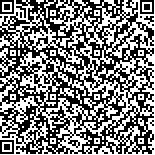| Quote
: |
刘莎莎,张赛,汤智,李玉冰,冯凯,刘湘.丹酚酸B对缺氧复氧诱导H9c2心肌细胞损伤的保护作用机制研究[J].湖南中医药大学学报英文版,2017,37(8):832-837.[Click to copy
] |
|
| |
|
|
| This paper
:Browser 3087times Download 992times |
| 丹酚酸B对缺氧复氧诱导H9c2心肌细胞损伤的保护作用机制研究 |
| 刘莎莎,张赛,汤智,李玉冰,冯凯,刘湘 |
| (湘潭市中心医院, 湖南 湘潭 411100;湘潭市中医院, 湖南 湘潭 411100;大连市友谊医院, 辽宁 大连 116100;大连市口腔医院, 辽宁 大连 116021) |
| 摘要: |
| 目的 观察丹酚酸B(Sal B)对H9c2心肌细胞缺氧复氧(hypoxia-reoxygenation,H/R)损伤的保护作用,并探讨其可能的作用机制。方法 首先构建H9c2心肌细胞缺氧复氧模型,采用噻唑蓝(MTT)法研究丹酚酸B与H9c2心肌细胞活力的量效关系,确定丹酚酸B的保护作用,给药方式为预给药。实验分为正常对照组、丹酚酸B组、模型组(H/R组)、H/R+丹酚酸B组,分别检测各组乳酸脱氢酶(LDH)、超氧化物歧化酶(SOD)、丙二醛(MDA)、谷胱甘肽过氧化物酶(GSH-Px)、过氧化氢酶(CAT)、活性氧簇(ROS)以及半胱氨酸天冬氨酸特异性蛋白酶-3(Caspase-3)的含量变化。Western印迹检测添加丹酚酸B对Akt磷酸化的影响,添加Akt抑制剂LY294002加以比较。结果 与正常对照组相比较,模型组LDH、MDA、ROS以及Caspase-3含量水平显著升高(P<0.05),SOD、GSH-Px以及CAT含量水平显著降低(P<0.05);与模型组相比,丹酚酸B能够显著提高SOD、GSH-Px以及CAT含量水平(P<0.05),显著降低LDH、MDA、ROS以及Caspase-3含量水平(P<0.05)。Western印迹结果显示与正常对照组相比较,模型组Akt磷酸化水平显著降低(P<0.001),相对于模型组丹酚酸B能够显著提高Akt的磷酸化水平(P<0.01),而这种保护作用能被LY294002所阻断(P<0.01)。结论 丹酚酸B对H9c2心肌细胞缺氧复氧损伤具有保护作用,其机制可能与磷脂酰肌醇 3-激酶(PI3K/Akt)通路相关。 |
| 关键词: 丹酚酸B H9c2心肌细胞 缺氧复氧 抗氧化 抗凋亡 磷脂酰肌醇3-激酶 |
| DOI:10.3969/j.issn.1674-070X.2017.08.005 |
| Received:December 10, 2016 |
| 基金项目: |
|
| Protective Effect of Salvianolic Acid B on Hypoxia-Reoxygenation Induced Injury in H9c2 Cardiomyocytes |
| LIU Shasha,ZHANG Sai,TANG Zhi,LI Yubing,FENG Kai,LIU Xiang |
| (Xiangtan Central Hospital, Xiangtan, Hunan 411100, China;Xiangtan Chinese Medicine Hospital, Xiangtan, Hunan 411100, China;Dalian (Municipal) Friendship Hospital, Dalian, Liaoning 116001, China;Dalian Stomatological Hospital, Dalian, Liaoning 116021, China) |
| Abstract: |
| Objective To investigate the protective effect of salvianolic acid B (Sal B) on hypoxia-reoxygenation (H/R) induced injury in H9c2 cardiomyocytes. Methods The hypoxia-reoxygenation model of H9c2 cardiomyocytes was constructed. The relationship between the activity of Sal B and H9c2 was measured by MTT assay, and the protective effect of Sal B was determined. The following sets of experiments were performed: control group, Sal B group, model group (H/R group), H/R+Sal B group. The contents of lactic dehydrogenase (LDH), superoxide dismutase (SOD), malonaldehyde (MDA), glutathione peroxidase (GSH-Px), catalase (CAT), reactive oxygen species (ROS) and Caspase-3 in all groups were determined. The effect of Sal B on Akt phosphorylation was tested with Western blotting, and LY294002 added as the control. Results Compared with the control group, LDH, MDA, ROS, and Caspase-3 levels in H/R group significantly increased(P<0.05) and SOD, GSH-Px, and CAT levels in H/R group significantly decreased (P<0.05). Compared with H/R group, Sal B significantly increased SOD, GSH-Px, and CAT levels and decreased LDH, MDA, ROS, and Caspase-3 levels. Western blotting results showed that: compared with the control group, Akt phosphorylation level in model group decreased significantly(P<0.01); compared with model group, Akt phosphorylation level in Sal B group increased significantly (P<0.01), while this effect could be blocked by LY294002 (P<0.01). Conclusion Sal B shows protective effect on H9c2 cadiomyocytes injury induced by H/R, which mechanism may be related with the PI3K/Akt signaling pathway. |
| Key words: salvianolic acid B H9c2 cadiomyocytes hypoxia-reoxygenation antioxidant anti-apoptosis PI3K/Akt |
|

二维码(扫一下试试看!) |
|
|
|
|


